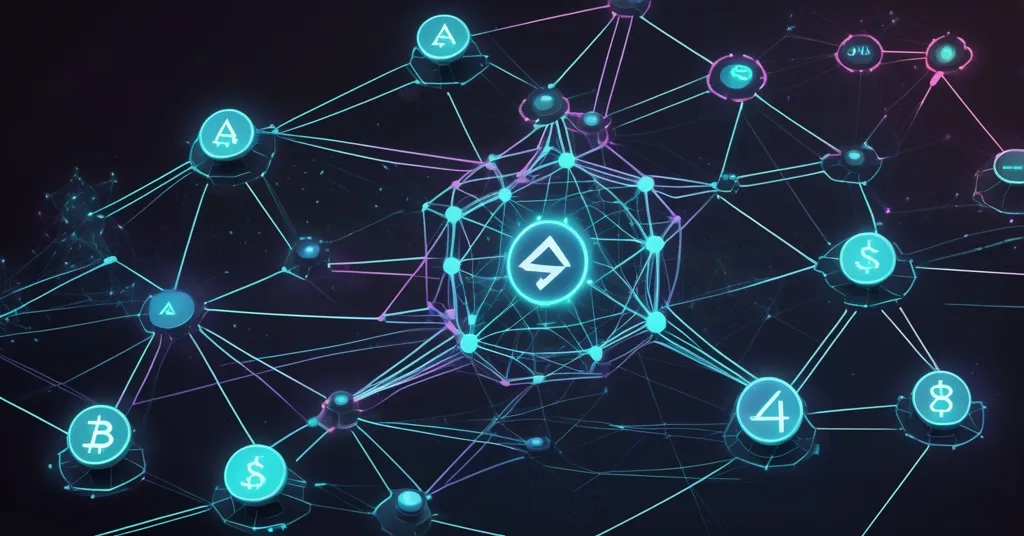Bittensor (TAO) Halving in 2025: Could It Surge to $5K Like Bitcoin’s Historic Rally?

TAO to $5K? Bittensor’s Halving Could Mirror Bitcoin’s Historic Surge
Bittensor (TAO), a cryptocurrency fueling a decentralized marketplace for AI compute and machine learning models, is stirring up serious buzz with its first halving event set for December 2025. Crypto trader Bongo has thrown out a jaw-dropping prediction of a $5,000 price tag by mid-2026, drawing parallels to Bitcoin’s explosive run during its 2012 halving cycle. But is this altcoin truly poised for a 13x rally from its current $380 level, or are we just slapping Bitcoin’s legacy onto the next shiny thing?
- Halving Catalyst: TAO’s daily token emissions will drop from 7,200 to 3,600 in December 2025, creating potential scarcity.
- Bold Forecast: Trader Bongo predicts a 10x post-halving surge, eyeing $5,000 for TAO by mid-2026.
- Reality Check: Success depends on real-world adoption of Bittensor’s decentralized AI infrastructure, not just hype.
What is Bittensor? Breaking Down the Basics
For the uninitiated, Bittensor isn’t your typical crypto project chasing Bitcoin’s “digital gold” crown. Instead, it powers a decentralized network where anyone with spare computational resources can contribute to AI tasks—think raw processing power for complex artificial intelligence projects—and earn TAO tokens as a reward. Imagine it as a global, peer-to-peer Airbnb for AI compute, where developers and enterprises can access machine learning models without bending the knee to Big Tech giants. Validators, the folks providing this compute or hosting specialized AI models, are incentivized with TAO, making the network a bustling marketplace for innovation at the crossroads of blockchain and artificial intelligence.
Within this ecosystem, “subnets” act as specialized mini-networks, each focusing on specific AI challenges—like medical diagnostics or financial forecasting—ensuring the system doesn’t devolve into a chaotic mess. Unlike Bitcoin, which serves as a decentralized monetary system and a hedge against fiat debasement, TAO’s value is tied directly to the utility of its network. If no one’s using these subnets or tapping into Bittensor’s resources, the token’s worth could flatline, regardless of any fancy tokenomics.
The Halving Hype: Bitcoin 2.0 or Wishful Thinking?
The centerpiece of the current excitement is Bittensor’s first halving, scheduled for December 2025. This event will cut the daily issuance of TAO tokens in half, from 7,200 to 3,600, reducing the flow of new tokens into the market. If that sounds familiar, it’s because Bitcoin pioneered this scarcity mechanism, slashing its own issuance roughly every four years. Historically, Bitcoin’s halvings in 2012, 2016, and 2020 have often preceded massive bull runs, as reduced supply met growing demand from investors betting on “digital gold.”
Crypto trader Bongo argues that TAO is tracing a similar path to Bitcoin’s 2010–2012 cycle, pointing to patterns of rapid price markups, sharp retracements, and prolonged consolidation phases before a potential post-halving explosion. For more on this comparison, check out this detailed analysis on Bittensor’s chart patterns mirroring Bitcoin’s pre-halving path. In Bongo’s own words:
“If it holds… a 10x post-halving #1 would see TAO around $5,000 by mid-2026.”
That’s a spicy call, no doubt, predicting a 13x jump from TAO’s current price of about $380, well below its all-time high of $760. The logic tracks on paper: less supply could mean higher prices if demand for Bittensor’s decentralized AI services spikes. We’ve even seen Bitcoin experience “front-run rallies” in the months leading up to its halvings, as speculative capital piles in early. For TAO, that could mean price action heating up as soon as November 2025. But let’s not guzzle the hopium just yet—Bitcoin’s early success played out in a wild, retail-driven market with little oversight. Today’s crypto space faces macroeconomic headwinds, regulatory scrutiny, and a far more crowded field. Can TAO really mimic BTC’s glory days?
Price Action: Key Checkpoints for TAO
Let’s zoom into TAO’s current chart and see if the market is humming the same tune. Right now, the token trades at a pivotal spot, with support levels between $350 and $370. For non-traders, think of these as guardrails—if TAO slips below, it might signal fading buyer confidence. On the upside, resistance sits at $450 to $500, a hurdle that, if smashed, could open the door to $600–$650. Beyond that looms the psychological wall of $760, the all-time peak from past rallies. Clearing these checkpoints would show TAO has the stamina for a longer run, though each level is a battleground for bulls and bears.
Speculators are also watching for a pre-halving pump late next year, a phenomenon where traders bet on future scarcity well before the event. If market sentiment swings bullish—say, due to a broader crypto rally post-Bitcoin’s 2024 halving—TAO could see fireworks sooner than expected. But without fundamental demand, these price pops are just hot air waiting to deflate.
Reality Check: Adoption Over Chart Patterns
Here’s where I throw on my skeptic hat. TAO isn’t Bitcoin, and its halving won’t magically conjure value from thin air. Bitcoin’s halvings worked because it carved out a unique “store of value” narrative in a nascent market. TAO’s worth hinges on utility—specifically, whether developers, researchers, and enterprises actually use its network for AI compute. If Bittensor’s subnets sit idle, or if validator incentives fail to attract serious computational power, no supply cut will prop up a $5,000 price tag. Tokenomics are sexy until you realize supply means squat without demand.
Consider the competitive landscape. Bittensor isn’t the only player in the decentralized AI game—projects like Fetch.AI and SingularityNET are also jockeying for the crown. What sets TAO apart is its focus on validator-driven incentives and specialized subnets, but it’s a dog-eat-dog niche. Will industries like healthcare or finance, which could benefit from decentralized machine learning models, take the plunge? Imagine a subnet dedicated to medical AI, where global researchers pool compute to train diagnostic tools without a central tech overlord skimming data. That’s the dream—but cost, scalability, and regulatory fears could keep enterprises tethered to familiar, centralized solutions.
Hard data on Bittensor’s network growth, like validator counts or on-chain transaction volume, remains sparse, making adoption tough to gauge. Without tangible metrics, we’re half-blind on whether TAO is gaining traction or just coasting on narrative. And let’s not ignore the broader crypto market’s mood by 2025–2026. If central banks keep tightening or a global recession hits, risk assets like altcoins could get crushed, halving or no halving. Conversely, if Bitcoin’s post-2024 halving sparks a risk-on mania, TAO might hitch a ride on the coattails of BTC’s dominance.
The Big Picture: AI Meets Blockchain’s Rebel Spirit
Despite the hurdles, there’s no denying the raw potential at the intersection of AI and decentralization. Centralized AI giants aren’t just gatekeepers—they’re digital feudal lords, hoarding compute and data while users play the role of powerless serfs. Bittensor flips a middle finger to that system, offering a vision where resources are democratized, and innovation isn’t bottlenecked by Silicon Valley titans. If even a sliver of the AI industry—projected to balloon into a trillion-dollar behemoth over the next decade—shifts toward decentralized platforms, TAO could surf a wave bigger than any halving hype.
As a Bitcoin maximalist at heart, I’ll always bow to BTC as the unassailable king of decentralization, the ultimate middle finger to fiat and central control. But projects like Bittensor remind us that blockchain’s promise extends beyond money into uncharted territories like artificial intelligence. It’s not about replacing Bitcoin—it’s about filling a niche BTC was never meant to touch. Still, I’ve seen too many “next big thing” altcoins implode on promises alone. Cool ideas don’t pay the bills; execution does. Bittensor has a shot at carving out a lasting role, but it’s got to prove its network isn’t just a tech bro fever dream.
Price Predictions? Take Them with a Truckload of Salt
Let’s address the elephant in the room: Bongo’s $5,000 call is bold, I’ll give him that, but I’ve watched too many crystal ball prophecies shatter to buy into this without serious skepticism. Price predictions in crypto are often little more than darts thrown at a board, dressed up with fancy charts and buzzwords. I’d rather zero in on fundamentals—adoption metrics, network activity, and real-world use cases—than gamble on moonshot guesses. If you’re here for quick riches, you’re in the wrong game. If you’re here for the tech and the revolution, keep your eyes on whether Bittensor delivers, not on some arbitrary dollar figure.
What’s Next for TAO?
So, is Bittensor the dark horse of the next bull run, or just another altcoin mirage destined to fade? The halving and the AI narrative give it a fighting chance, but the road to outsized gains—or even sustained relevance—is riddled with landmines. Monitor those key price zones for short-term signals, but more crucially, watch for signs of adoption: are validators joining in droves? Are industries experimenting with subnets? Could Bittensor ignite a true decentralized AI uprising, or are we just projecting Bitcoin’s past onto the latest trendy token? Only time will tell, but one thing’s certain—hype is cheap, and real utility is everything.
Key Takeaways and Burning Questions
- What is Bittensor (TAO) and how does it differ from Bitcoin?
Bittensor (TAO) fuels a decentralized marketplace for AI compute and machine learning models, rewarding contributors with tokens, while Bitcoin operates as a peer-to-peer digital currency and store of value. - Why is TAO’s December 2025 halving generating so much excitement?
It will cut daily token emissions from 7,200 to 3,600, potentially driving up prices through scarcity if demand for Bittensor’s AI network grows, echoing Bitcoin’s halving dynamics. - How does TAO’s price trajectory compare to Bitcoin’s early cycles?
Traders like Bongo see similarities with Bitcoin’s 2010–2012 patterns—sharp gains, pullbacks, and consolidation—hinting at a possible post-halving surge, though today’s market is far more complex. - What must happen for TAO to reach ambitious targets like $5,000 by 2026?
Widespread adoption by industries needing AI compute, strong on-chain activity, validator growth, and a favorable crypto bull market are all critical to fuel such a rally. - What immediate price levels should TAO traders monitor?
Keep tabs on support at $350–$370, resistance at $450–$500, with higher targets of $600–$650 and the all-time high of $760 as major barriers. - What are the biggest risks to Bittensor’s success in the AI-blockchain space?
Lack of real-world adoption, fierce competition from other decentralized AI projects, scalability challenges, and broader market downturns could all derail TAO’s growth, regardless of halving hype.



